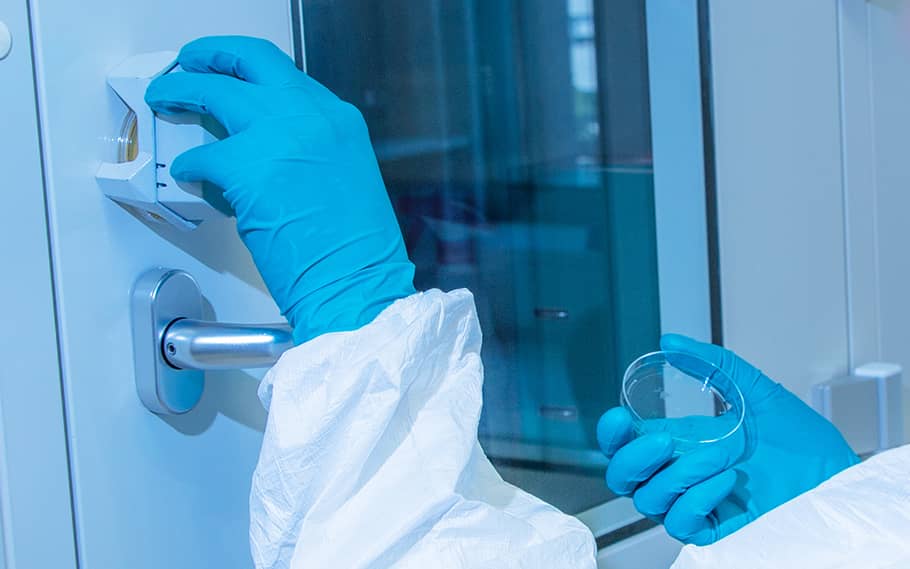Hygienic handling of foodstuffs is the key to producing safe and attractive products. As well as a practicable concept for personal hygiene, product hygiene and equipment hygiene, verification according to a hygiene plan is necessary. Microbiological analyses demonstrate in a simple way that a hygiene concept also functions when it is actually implemented. For this purpose, the analyses are carried out in an accredited laboratory.
As a GMP-accredited contract laboratory in Switzerland, we can offer you holistic consultation in the areas of microbiology and hygiene monitoring. We can help you in defining a hygiene concept, taking account of your specialised situation and requirements.
Would you like to know where the critical points in your production process are? Can we support you in fulfiling any requirements placed on you by the authorities?
Our employees possess many years of experience in the area of foodstuff production and can support you with their experience in the implementation of controls that meet the appropriate demands.
Would you like us to carry out the sampling? Would you like your samples to be collected on site? Our service employees would be very pleased to visit you and transport your samples directly to the laboratory. The analysis will be carried out immediately, competently and reliably.

![[Translate to english:] Hygiene-Monitoring: Probenabholung [Translate to english:] Hygiene-Monitoring: Probenabholung](/fileadmin/Content/05_Lebensmittel/Lebensmittel_Hygiene-Monitoring/lebensmittel-hygiene-monitoring-header.jpg)

![[Translate to english:] 1 Abklatsch-Proben: Mechanische Hilfsmittel stellen die Reproduzierbarkeit der Probennahme sicher. [Translate to english:] 1 Abklatsch-Proben: Mechanische Hilfsmittel stellen die Reproduzierbarkeit der Probennahme sicher.](/fileadmin/Content/05_Lebensmittel/Lebensmittel_Hygiene-Monitoring/lebensmittel-hygiene-monitoring-slider-content-01.jpg)
![[Translate to english:] 2 Abklatsch-Proben: Mechanische Hilfsmittel stellen die Reproduzierbarkeit der Probennahme sicher. [Translate to english:] 2 Abklatsch-Proben: Mechanische Hilfsmittel stellen die Reproduzierbarkeit der Probennahme sicher.](/fileadmin/Content/05_Lebensmittel/Lebensmittel_Hygiene-Monitoring/lebensmittel-hygiene-monitoring-slider-content-02.jpg)
![[Translate to english:] 3 Abklatsch-Proben: Mechanische Hilfsmittel stellen die Reproduzierbarkeit der Probennahme sicher. [Translate to english:] 3 Abklatsch-Proben: Mechanische Hilfsmittel stellen die Reproduzierbarkeit der Probennahme sicher.](/fileadmin/Content/05_Lebensmittel/Lebensmittel_Hygiene-Monitoring/lebensmittel-hygiene-monitoring-slider-content-03.jpg)
![[Translate to english:] 4 Abklatsch-Proben: Mechanische Hilfsmittel stellen die Reproduzierbarkeit der Probennahme sicher. [Translate to english:] 4 Abklatsch-Proben: Mechanische Hilfsmittel stellen die Reproduzierbarkeit der Probennahme sicher.](/fileadmin/Content/05_Lebensmittel/Lebensmittel_Hygiene-Monitoring/lebensmittel-hygiene-monitoring-slider-content-04.jpg)

